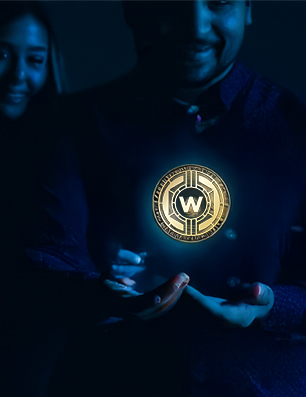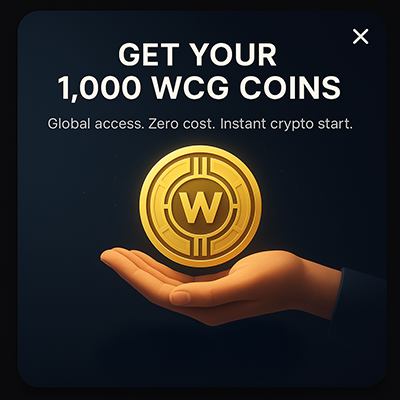- Written by: Nazar Kuzmyn
- Sun, 14 Aug 2022
- United States
Crypto game developers should focus on creating a good game first, and implementing the blockchain features after. Continue reading DevGAMM Conference Findings: What Blockchain Gaming Can Learn from Traditional Gaming at DailyCoin.com.
DevGAMM Conference Findings: What Blockchain Gaming Can Learn from Traditional Gaming
Blockchain gaming is a promising but quite young field of digital entertainment. Thus, the number of conventions related to play-to-earn, metaverses, and NFTs can be counted on the fingers, even though it rises quarterly.
That’s why DailyCoin tends to visit not only blockchain gaming conferences but traditional gaming ones too. DevGAMM became one such conference, especially taking into account that it moved closer to our main office this year. The reason is not blissful at all: DevGAMM’s homeland, Ukraine, has been thrown into war by Russian invaders.
This year, the event took place in Vilnius, the capital of Lithuania. Among the most prominent speakers were Tom Giardino and Alden Kroll from Valve’s Steam department, Leszek Szczepanski from Guerilla Games, Ahmed Salama from Ubisoft Stockholm, Sergei Savchenko from Bethesda Game Studios, and Jason Polansky from Atari.
DailyCoin found some interesting highlights that blockchain gaming could take heed of, as well as asked about their thoughts on play-to-earn, NFTs, and metaverses.
What Does Blockchain Gaming Lack So Far?
Blockchain technology is beneficial for many fields of human activity. It’s a digital store of value, which can be universal for finance, art, and now – gaming. On the other hand, even though every game has an in-game currency/points system, it’s never the cornerstone of the project.
Blockchain in a game without gameplay is nothing more than a gimmick. This is the first and the most important lesson that play-to-earn should learn now.
Right at the very beginning of the convention, Leszek Szczepanski from Guerilla Games took the main stage telling the audience about the peculiarities of game design in the recent “Horizon Forbidden West.“ In conclusion, he stated:
“Every system is only as good as it serves the design of the game.”
This is one of the best statements for blockchain projects to take into account. The ideology of a game should be intertwined with its gaming mechanics. Although blockchain provides multiple options for gaming mechanics creation, the most used one is a store of value. That’s why play-to-earn has established the reputation of being too lazily made.
In an interview for DailyCoin, Andrea Zampedri, a game producer at Nordcurrent, said:
“Gameplay goes always first. Unfortunately, most NFT games are idle games. If the game has good gameplay, there are some ways to make it better.”
Of course, not all blockchain games are idle. Such projects like Blankos Block Party and metaverses like Decentraland and The Sandbox give a variety of gameplay options, on the contrary.
On the other hand, there is a controversial “tradition” in the field: blockchain games start their journey with only a few trailers and a coin offering. Therefore, the players invest in a game not knowing about the exact gaming mechanics they’re going to provide.
Also, Andrea Zampedri provided grokking as one of the tools of gameplay advancements:
“If a game has decent gameplay, grokking will definitely help to improve it. Be it a regular game or a blockchain one.”
The term itself was introduced by Robert Heinlein in his novel Stranger in a Strange Land. On the other hand, the person who related the term to gaming was Raph Koster in A Theory of Fun for Game Design. He explains the term “to grok” as “to understand something so thoroughly that you have become one with it or even love it.”
Thus, it’s something like muscle memory but in gaming. Andrea mentioned that fun lies somewhere between boredom when the game is too easy and frustration when the game is too hard. A game designer has to make players use game mechanics like playing a musical instrument in the least “painful” way. And when the player masters this, he can start to improvise.
What Potential Lies in Blockchain Gaming?
Indeed, there are many things that blockchain games are good for. Blockchain technology provides many ways for improvement. Those are not only the possibility to own in-game items or characters, but also creating multiverses between studio’s various games as well as decentralized support of mod developers.
No wonder that two of the most popular genres among blockchain games are virtual pet RPGs and sandbox games. While the first one’s Pokémon-inspired motto “catch ‘em all” perfectly matches with NFT ideology, games in the sandbox genre give that decentralized freedom as well as huge possibilities for creativity.
During his talk, the CEO of tinyBuild GAMES, Alex Nichiporchik, mentioned:
“Gameplay mechanics [are] invented by the player rather than planned by the developer.”
He showed one of the first viral videos on Minecraft, which had already become a meme. That was the time of Minecraft’s alpha release in 2010, and not so many people knew about it. In the video, the player accidentally set his house on fire. Nobody expected such a course of events. And obviously, developers hadn’t planned this either. But the game went viral soon enough.
“Real stakes comes with real pain,” he summed up.
Blockchain games definitely have an advantage in this regard. Losing real money is more painful than in-game currency. However, this should be fun! Players are paying for fun, whether it’s a purchase of an entire game or buying some parts of it.
But back to sandbox gaming mechanics: one of the crypto metaverses is even called “The Sandbox.” The genre is quite suitable for a decetralized approach of modding and community building. It can’t be a coincidence that some of the most popular games ever, like Counter-Strike, Dota 2, and PUBG, grew up to independent projects from being just modifications.
However, the ace in the hole for crypto games is their ability for “metaversing.” By this, I mean those projects created within the sandbox games will be a part of the universe, blockchain-wise. Everything created, gained, earned, or looted in one game will be easy to use in the metaverse itself as well as various other games within it.
Conclusions
- Gameplay is the central pillar. As soon as crypto games experience the shift of paradigm, blockchain gaming will start blooming.
- Crypto game developers should focus on creating a good game first, and implementing the blockchain features after.
- Blockchain games have the potential for providing new gaming experiences. However, the approach has to be changed. Instead of attracting people who’d like to “get rich fast,” blockchain games should be targeted at young enthusiasts with creative ideas and should build something cool within sandbox metaverses.
To find out more about the peculiarities of blockchain games, check:
What If Fortnite Were on Blockchain and Had Crypto?
Minecraft with Crypto and Blockchain: The Perks of Playing Enjincraft
A Review of the Most Popular Pokémon-Like Virtual Pet Play-to-Earn Games






